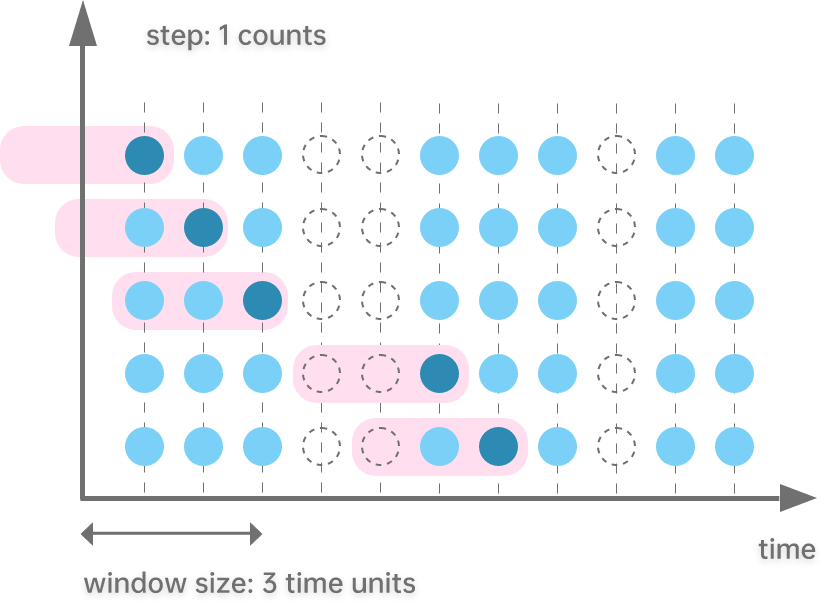Moving Functions (m-functions)
DolphinDB provides moving functions (m-functions) for sliding window aggregation. A window of a specified size slides over each element in the given data set to perform a calculation on the windowed values. The result has the same size as the given data.
Introduction
Higher-order function moving:
moving(func, funcArgs, window, [minPeriods])
The m-functions are optimized for their specialized use cases and therefore
have a better performance than the higher-order function
moving().
-
Syntax templates for the m-functions:
mfunc(X, window,[minPeriods]) mfunc(X, Y, window,[minPeriods])Parameters:
X (Y) is a vector/matrix/table/tuple (with scalars or equal-length vectors)/dictionary. Note that functions
mmseandmslronly support vectors.window is an integer no smaller than 2 or a scalar of DURATION type indicating the size of the sliding window. Note: The window size is capped at 102400 when m-functions are used in the streaming engines.
minPeriods (optional) is a positive integer indicating the minimum number of observations in a window required to be not null (otherwise the result is NULL).
List of Functions
Based on the value passed by window, m-functions can be divided into two categories:
(1) When window is a positive integer (or of integral type) or a DURATION value:
mfunc(X, window, [minPeriods])msum, msum2, mavg, mprod, mmax, mmin, mmed, mfirst, mfirstNot, mlast, mlastNot,mrank, mcount, mpercentile, mstd, mstdp, mvar, mvarp, mkurtosis, mskew, mimax, mimin, mifirstNot, milastNot, miminLast, mimaxLast
mfunc(X, Y, window, [minPeriods])
(2) When window is a positive integer:
Windowing Logic
The m-functions operate over backward windows. That is, each element in the given data corresponds to a window (with the size of window) where it is included as the last value.
- When X is a regular (non-indexed) vector, matrix or table, the size of
the sliding window is based on element counts.
Note: For tables, only columns of Boolean and numeric types participate in the calculation.
The m-functions (excluding
mrankandmcount) provide the minPeriods parameter for specifying the minimum number of observations in a window.Specifically,
-
If minPeriods is not specified, return NULL for the first (window-1) windows.
-
If minPeriods is specified, return NULL for the first (minPeriods-1) windows.
The following example illustrates how the window slides:
X = 2 1 3 7 6 5 4 9 8 10 msum(X, 3); // output: [ , , 6, 11, 16, 18, 15, 18, 21, 27]
-
When X is an indexed series or an indexed matrix, the size of the sliding window is based on time. If window is a positive integer, it takes the same time unit as the index of X.
The following example illustrates how the window slides:
T = [2022.01.01, 2022.01.02, 2022.01.03, 2022.01.06, 2022.01.07, 2022.01.08, 2022.01.10, 2022.01.11] X = 1..8 X1 = indexedSeries(T, X) msum(X1, window=3d);label col0 2022.01.01 1 2022.01.02 3 2022.01.03 6 2022.01.06 4 2022.01.07 9 2022.01.08 15 2022.01.10 13 2022.01.11 15 
